/GettyImages-599824813-56c08e125f9b5829f867207c.jpg)
Mary Ainsworth Strange Situation Study Today Parenting
Mary Ainsworth and the Strange Situation Procedure CC BY-NC-ND 4.0 Authors: Robbie Duschinsky Abstract and Figures Cornerstones of Attachment Research re-examines the work of key.
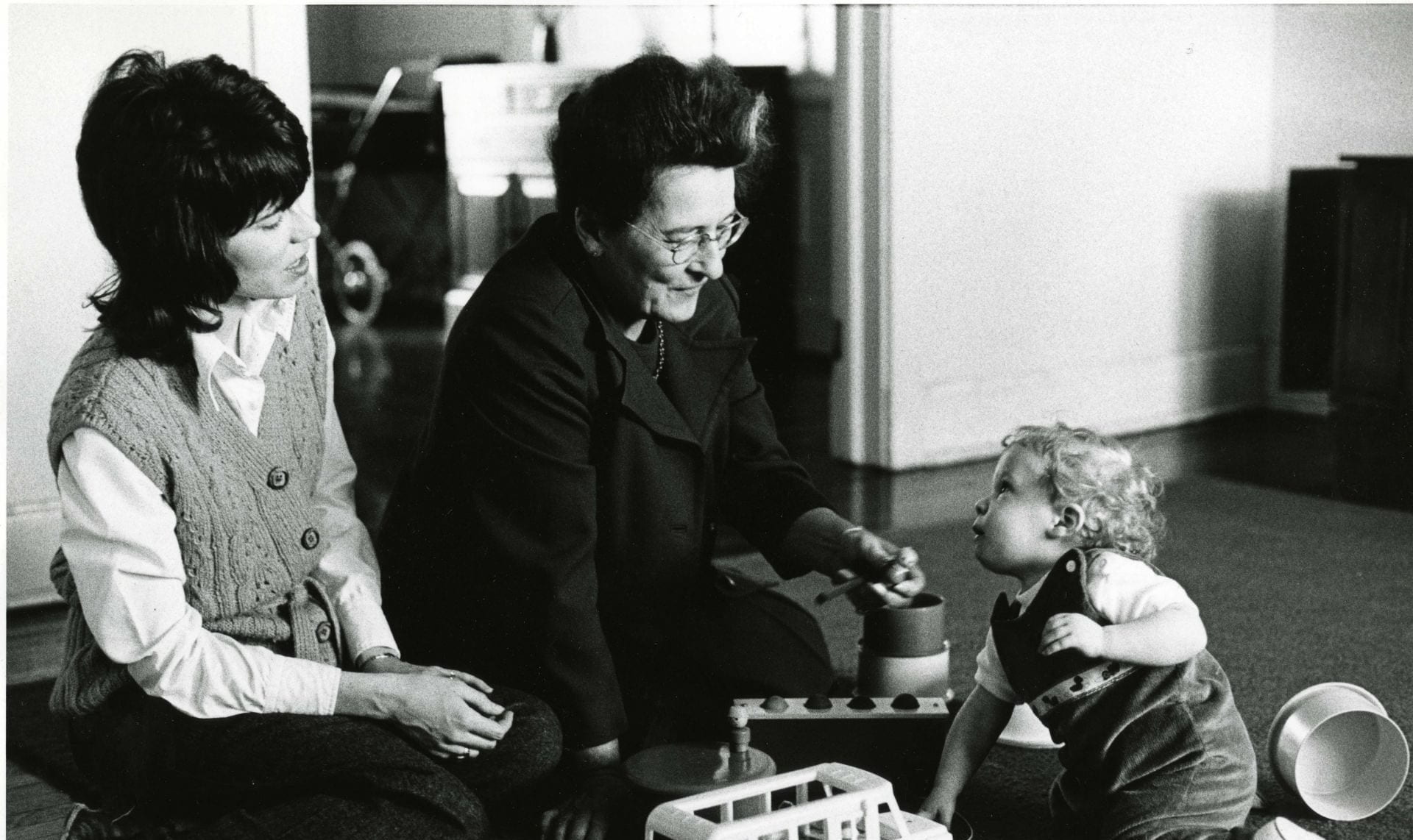
Mary Ainsworth Woman is a Rational Animal
Mary Ainsworth's Strange Situation Procedure (SSP) represents a fundamental breakthrough in attachment research because it grounded Bowlby's attachment theory (Bowlby, 1969) on empirical evidence (Holmes, 1993).SSP was the first paradigm allowing developmental psychologists to classify caregiver-child dyads' attachment through a 20-min laboratory procedure, overcoming the time length and.
:max_bytes(150000):strip_icc()/GettyImages-599824813-56c08e125f9b5829f867207c.jpg)
🔥 Mary ainsworth uganda study. Mary Ainsworth Attachment Theory
Ainsworth's Strange Situation (1970) used structured observational research to assess & measure the quality of attachment. It has 8 pre-determined stages, including the mother leaving the child, for a short while, to play with available toys in the presence of a stranger & alone and the mother returning to the child.

Ainsworth strange situation test Ekolm
Annotate Cite Permissions Share Abstract Attachment as an empirical research paradigm may be regarded as having fully commenced only with Ainsworth's work. This chapter begins by introducing the biographical context of Ainsworth's work, including her early work at Toronto University.

The Strange Situation |Mary Ainsworth Ainsworth, Adverse childhood
She designed the strange situation procedure to observe early emotional attachment between a child and their primary caregiver . A 2002 Review of General Psychology survey ranked Ainsworth as the 97th most cited psychologist of the 20th century. [2] Many of Ainsworth's studies are "cornerstones" of modern-day attachment theory. [3] [4] Life
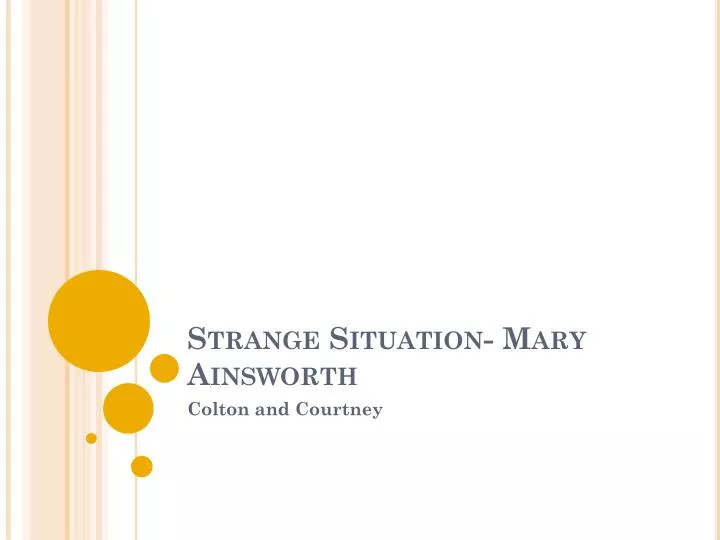
PPT Strange Situation Mary Ainsworth PowerPoint Presentation, free
The strange situation is a procedure devised by Mary Ainsworth in the 1970s to observe attachment in children, that is relationships between a caregiver and child. It applies to children between the age of nine and 30 months. Broadly speaking, the attachment styles were (1) secure and (2) insecure (ambivalent and avoidance).

Pin on A new Soc prob
The strange situation is a standardized procedure devised by Mary Ainsworth in the 1970s to observe attachment security in children within the context of caregiver relationships. It applies to infants between the age of nine and 18 months.

Mary Ainsworth Psychology
The test is called The Strange Situation Technique because it is conducted in a context that is unfamiliar to the child and therefore likely to heighten the child's need for his or her parent (Ainsworth, 1979). During the procedure, that lasts about 20 minutes, the parent and the infant are first left alone, while the infant explores the room.
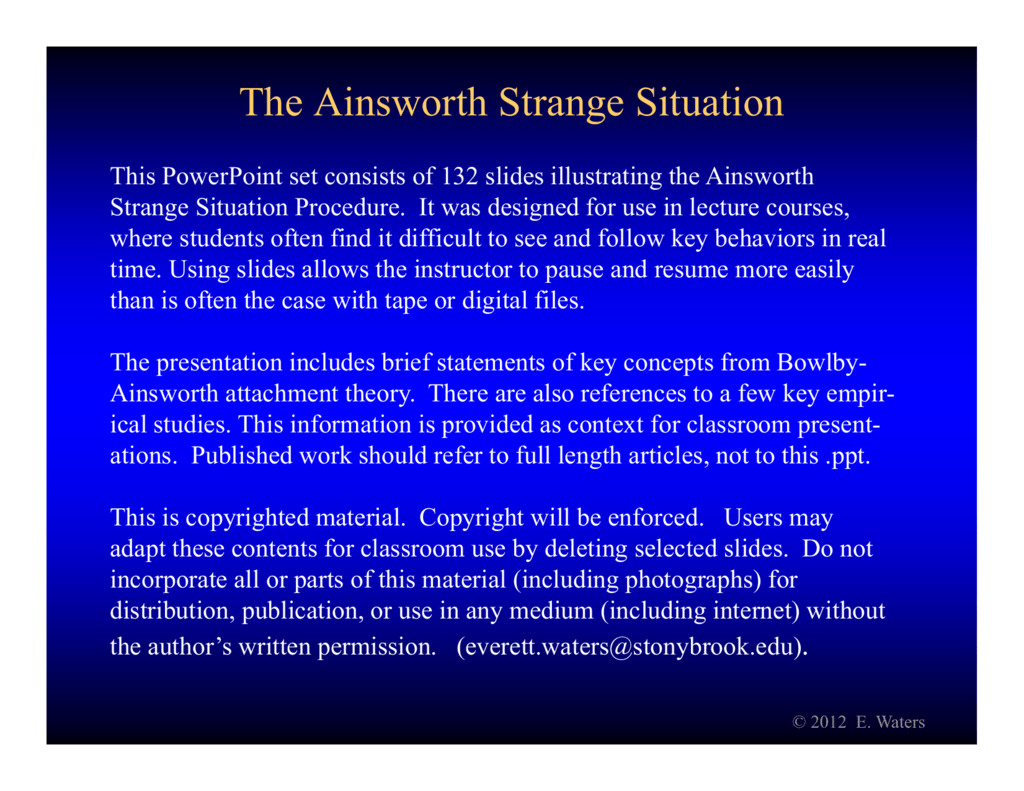
The Ainsworth Strange Situation
The American-Canadian psychologist Mary Ainsworth (1913-1999) developed the Strange Situation Procedure (SSP) to measure mother-child attachment and attachment theorists have used it ever since. When Ainsworth published the first results of the SSP in 1969, it seemed a completely novel and unique instrument.

Mary Ainsworth The Strange Situation CRINAMORPHO
Contact Us Mary Ainsworth Dec 8, 2020 | Uncategorized | 0 comments ~ By Michael Zummer ~ Best known for her Strange Situation experiment and lasting contributions to attachment theory, Canadian-American psychologist Mary Ainsworth was a pioneer in developmental psychology. She was a groundbreaking researcher into childhood attachment.

Attachment 7 Mary Ainsworth's Strange Situation Teaching Resources
A member of this research group in the 1950s, Mary Ainsworth drew on Bowlby's theory to develop a laboratory-based procedure, the Strange Situation (SSP), as a means of studying differences between infant-caregiver dyads in the functioning of the attachment behavioral system.

Attachment Ainsworth's Strange Situation Storyboard
In 1969, American psychologist Mary Ainsworth gave developmental psychology a new procedure for studying attachment in infants. She called it the strange situation classification, and it's widely referred to as simply the strange situation.

Mary Ainsworth Strange Situation Experiment
Mary Ainsworth was a developmental psychologist perhaps best known for her Strange Situation assessment and contributions to the area of attachment theory. Ainsworth elaborated on Bowlby's research on attachment and developed an approach to observing a child's attachment to a caregiver.
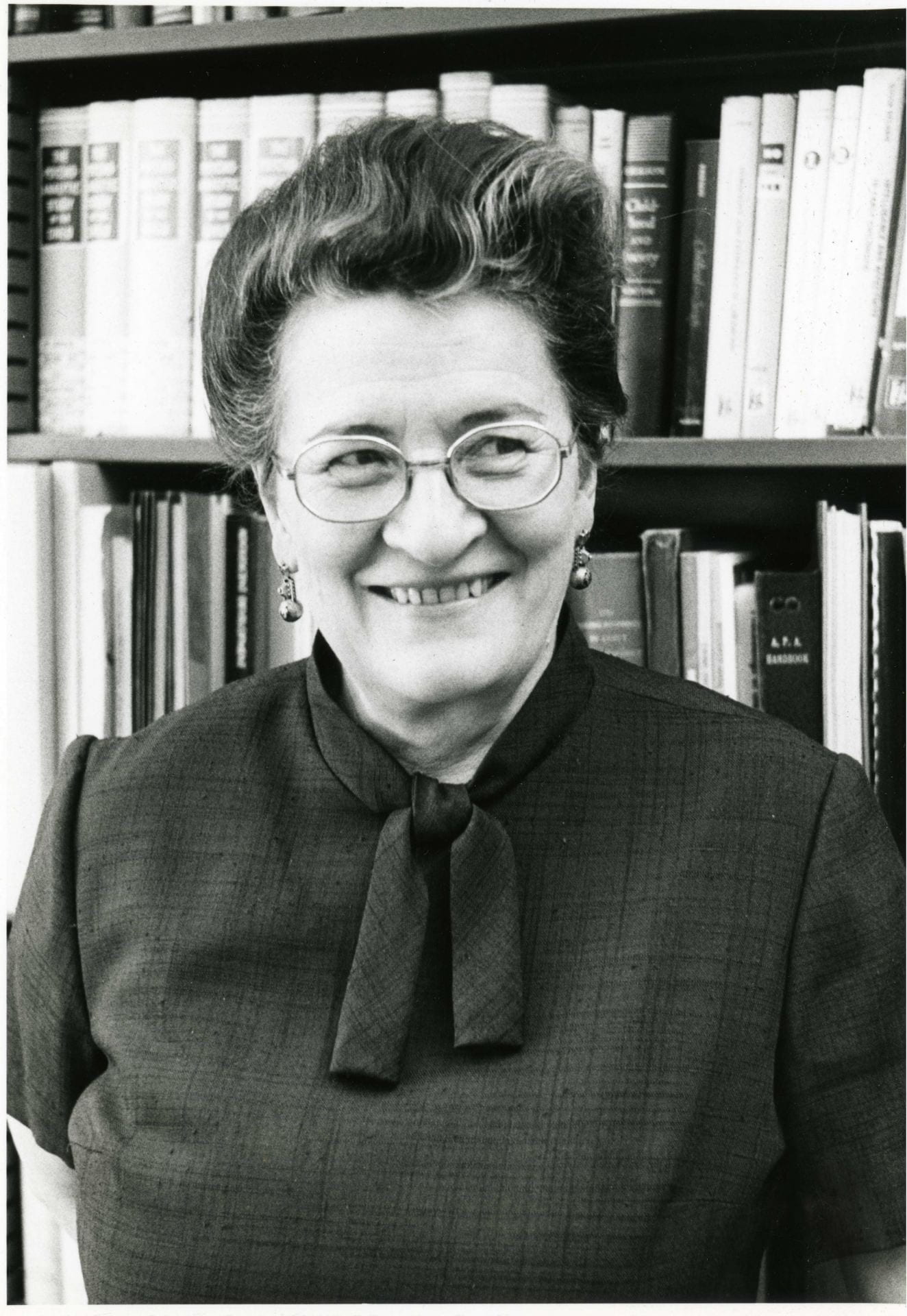
Mary Ainsworth Woman is a Rational Animal
The American-Canadian psychologist Mary Ainsworth (1913-1999) developed the Strange Situation Procedure (SSP) to measure mother-child attachment and attachment theorists have used it ever since. When Ainsworth published the first results of the SSP in 1969, it seemed a completely novel and unique instrument.

Mary Ainsworth (Strange Situation) SCIL Psychology
The Strange Situation Experiment is a standardized laboratory procedure created in the 1960s by American-Canadia psychologist Mary Ainsworth to identify differences in infant attachment. It measures how a child responds to separations and reunions with the parent to assess the early security of attachment depicted in the Attachment Theory.
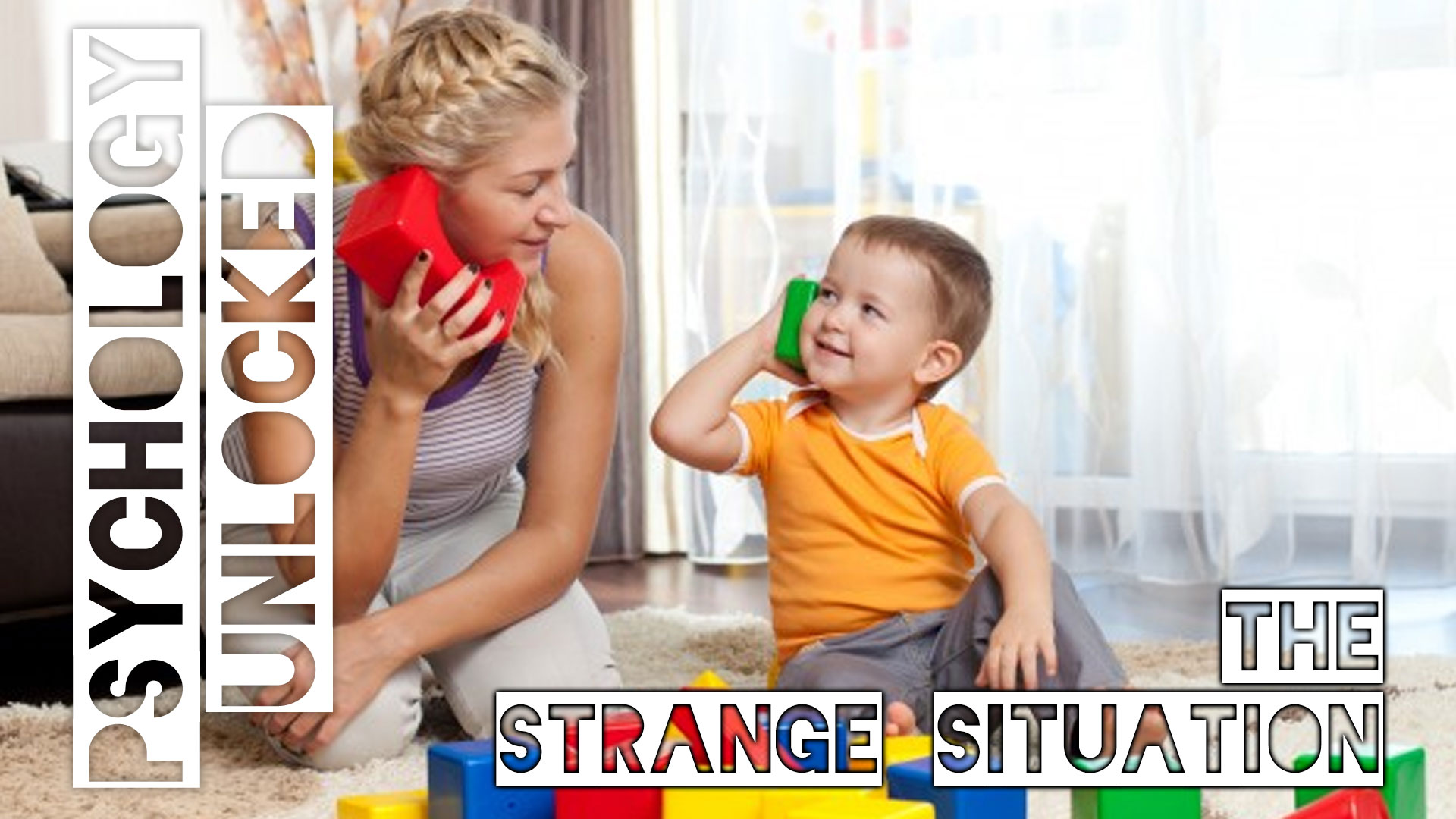
Mary Ainsworth’s Strange Situation Psychology Unlocked
The American-Canadian psychologist Mary Ainsworth (1913-1999) developed the Strange Situation Procedure (SSP) to measure mother-child attachment and attachment theorists have used it ever since. When Ainsworth published the first results of the SSP in 1969, it seemed a completely novel and unique instrument.